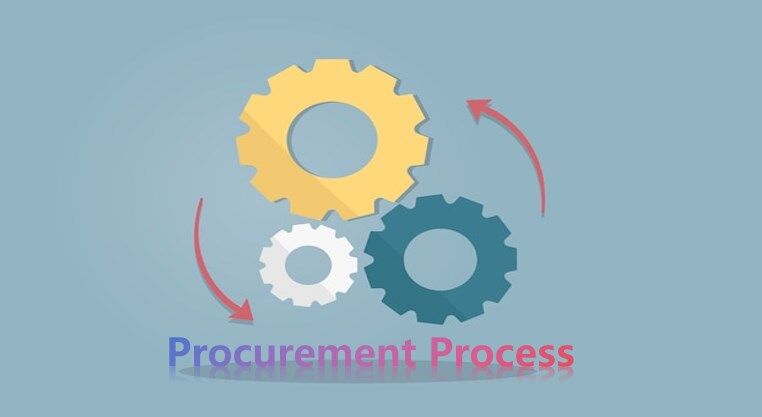reputación, confiabilidad,yexperienciaen las transacciones transfronterizas se vuelven críticas. ÉlS también es importante evaluar al proveedor
S comprensión de los procedimientos internacionales de envío y aduanas.
5. Solicitud internacional de cotización (RFQ) y comparación de cotización
El proceso RFQ es similar al doméstico, pero debe considerar factores adicionales comotipos de cambio de divisas,aranceles y costos de envío internacional. Estos elementos pueden afectar significativamente el costo general y la viabilidad de la adquisición.en las transacciones transfronterizas se vuelven críticas. Él6. Negociación comercial internacional
Las negociaciones en la adquisición internacional a menudo son más complejas, lo que requiere consideraciones de
comunicación intercultural, métodos de pago internacional,incoterms(Términos comerciales internacionales). El objetivo es llegar a un acuerdo que mitiga los riesgos y garantice una transacción suave.
7. Firma de contratos de comercio internacional
Después de negociaciones exitosas, ambas partes firman un contrato que cumple conleyes de comercio internacional. Este contrato describe los términos del acuerdo, incluidas las responsabilidades de ambas partes, los términos de pago, los horarios de entrega y los mecanismos de resolución de disputas.
8. Preparación de documentos de exportación e importación
Un paso importante en eles la preparación de los documentos de exportación e importación necesarios. Esto incluye facturas comerciales, listas de embalaje, certificados de origen y cualquier otro documento requerido para la autorización aduanera.9. Disposición logística
La logística internacional es una tarea compleja que implica elegir el modo correcto de transporte (mar, aire o tierra), coordinar con los transportistas y garantizar que todos los documentos de envío estén en orden. Él
También es crucial tener en cuenta el tiempo de entrega para el envío internacional.10. Seguimiento de pedidoEl seguimiento de los pedidos internacionales requiere monitorear el envío en diferentes países, lo que puede implicar tratar con múltiples operadores y autoridades aduaneras. El seguimiento efectivo asegura que los bienes lleguen a su destino a tiempo y en buenas condiciones.
11. Importar autorización aduanera
Una vez que los bienes llegan al país de destino, deben despejar las aduanas. ElImportar autorización aduaneraEl proceso implica presentar los documentos requeridos, pagar los aranceles e impuestos aplicables, y garantizar que los bienes cumplan con las regulaciones locales.
12. Recibo e inspección
Tras una autorización aduanera exitosa, los bienes se entregan al comprador, quien realiza una inspección exhaustiva para garantizar que cumplan con las especificaciones acordadas. Cualquier problema debe abordarse de inmediato para evitar disputas.13. Pago comercial internacionalLos pagos en adquisiciones internacionales generalmente se realizan a través de métodos como
Cartas de crédito o transferencias bancarias
. Estos métodos proporcionan seguridad a ambas partes asegurando que el pago solo se realice una vez que los bienes hayan sido enviados y recibidos.
14. Gestión de riesgos
La adquisición internacional implica un mayor nivel de riesgo, incluidas las fluctuaciones monetarias, la inestabilidad geopolítica y las posibles interrupciones en la cadena de suministro. Las empresas deben tener un sólidogestión de riesgosestrategia para mitigar estos riesgos.
15. Mantenimiento y evaluación de registros
Al igual que con la adquisición nacional, se deben mantener registros detallados de todas las transacciones. Además, el desempeño del proveedor y los proveedores de logística se evalúa para informar las futuras decisiones de adquisición.
Conclusión
5. Solicitud internacional de cotización (RFQ) y comparación de cotización
El proceso RFQ es similar al doméstico, pero debe considerar factores adicionales comoEl proceso de adquisición, ya sea nacional o internacional, es una función crítica que afecta directamente a una empresaS Operaciones y rentabilidad. Al comprender los matices de cada proceso, las empresas pueden tomar decisiones informadas que optimizan su cadena de suministro, reduzcan los costos y garanticen la entrega oportuna de bienes y servicios. A medida que la globalización continúa dando forma al panorama empresarial, dominar los procesos de adquisición nacionales e internacionales será clave para mantener una ventaja competitiva.
¿Está buscando mejorar sus estrategias de adquisición? Ya sea que esté apuntando a los mercados nacionales o internacionales, la implementación de los pasos descritos en esta guía puede ayudar a optimizar sus procesos y lograr mejores resultados.
ContáctenosHoy para obtener más información sobre cómo nuestra agencia internacional de adquisiciones puede apoyar sus necesidades.es más complejo que la investigación nacional. Implica comprender los proveedores globales, las tendencias de precios internacionales y los posibles desafíos, como las barreras del idioma y las diferencias de zona horaria. Las empresas también deben considerar factores como las diferencias culturales y las regulaciones comerciales internacionales.
3. Verificación de cumplimiento
Una diferencia crucial en la adquisición internacional es la necesidad de uncomprobación de cumplimiento. Las empresas deben asegurarse de que sus actividades de adquisición se adhieran a los requisitos legales y regulatorios de los países exportadores e importadores. Esto incluye comprender las leyes de importación/exportación, aranceles y cualquier restricción a ciertos bienes.
4. Selección de proveedores
Seleccionar un proveedor a escala internacional requiere evaluar a los proveedores que tienen la capacidad de participar en el comercio internacional. Factores comoen las transacciones transfronterizas se vuelven críticas. Élen las transacciones transfronterizas se vuelven críticas. Él
El proceso de adquisición, ya sea nacional o internacional, es una función crítica que afecta directamente a una empresa
en las transacciones transfronterizas se vuelven críticas. Él
en las transacciones transfronterizas se vuelven críticas. Él
 Mujeres ropa activa
Mujeres ropa activa
 Ropa de ropa activa
Ropa de ropa activa
 Ropa de hombres al aire libre
Ropa de hombres al aire libre
 Ropa para al aire libre para mujeres
Ropa para al aire libre para mujeres
 Deportes de equipo
Deportes de equipo
 Sports Shaper y Sports Safety
Sports Shaper y Sports Safety
 Acampar y senderismo
Acampar y senderismo
 Boxing Fighting & Dance Gymnastics
Boxing Fighting & Dance Gymnastics
 Sala de juegos y patio trasero
Sala de juegos y patio trasero
 Natación y playa
Natación y playa
 Accesorios deportivos y al aire libre
Accesorios deportivos y al aire libre
 Ciclismo
Ciclismo
 Deportes de invierno
Deportes de invierno
 Deportes de raqueta
Deportes de raqueta
 Deportes acuáticos
Deportes acuáticos
 Caza
Caza
 Aptitud física
Aptitud física
 Pesca
Pesca












































